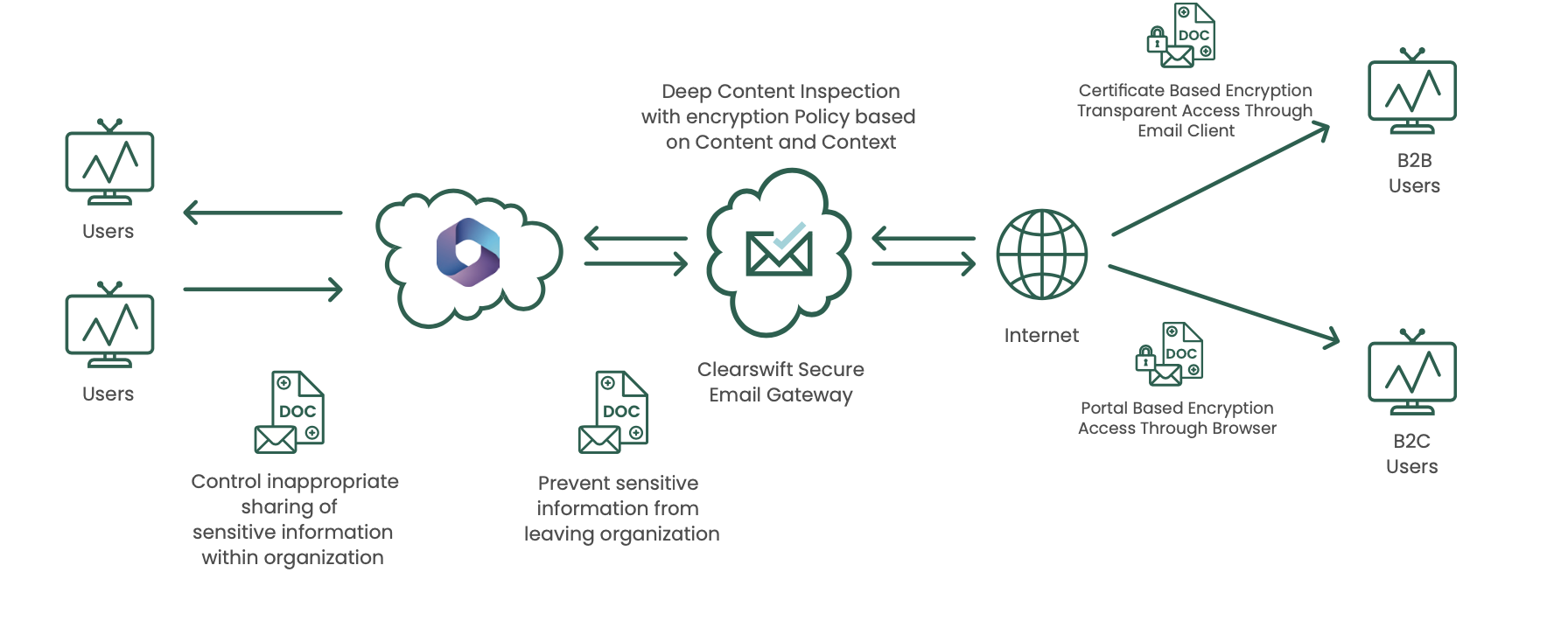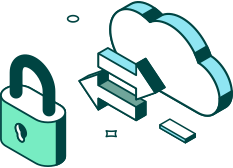What is Cloud Security?
Over the past decade, cloud adoption has seen explosive growth at both consumer and enterprise level, and it is easy to see why. Cloud-based applications have significantly changed the way we work and share information more efficiently. Cloud-based computing has transformed IT infrastructures making them more flexible, scalable, and cost effective. According to Gartner, cloud-first strategies are a way for organizations to ‘transform, differentiate, and gain competitive advantage’ and many are progressing on their digital transformation journeys.
When moving to the cloud, organizations have several deployment options including:
- Public Cloud – where all infrastructure is owned and managed by a cloud service provider such as AWS or Microsoft Azure.
- Private Cloud – where a cloud computing network is used exclusively by one organization, either located at on-site data center, or hosted by a third-party.
- Hybrid Cloud – where data and applications move between both public and private clouds, allowing organizations to reap the benefits from both environments.
Whichever option an organization chooses, they all have implications for security and when migrating to the cloud, a key consideration is ensuring that data, systems, and applications are fully protected from cyber threats and unauthorized access. An organization needs to ensure it can apply its security policies to the cloud and that they are consistent with those applied to any of its on-premise infrastructures. To achieve this, organizations use cloud security solutions and services, which protect data in the cloud and keep the organization compliant with data privacy laws and industry regulations.
Threats and Challenges to Cloud Security
Any IT infrastructure is susceptible to cyberattacks and the cloud is no exception. Organizations use cloud-based applications daily, whether it’s Microsoft 365, Google Drive, Dropbox, LinkedIn, Salesforce, or one of the many sanctioned (and unsanctioned) Shadow IT applications used on an ad-hoc basis.
Adding cloud-based email or web services exposes the organization to potential threats such as data breaches, DDOS (denial-of-service) attacks, or account hijacking. Data breaches are caused by unauthorized individuals accessing or exfiltrating confidential or sensitive data stored in the cloud, this could be by a malicious insider or by a well-meaning, but careless employee. Regardless of how it happens, the implications of data breach are the same – a potential fine for non-compliance and a damaging loss of reputation.
Another challenge is availability of services in the cloud. Organizations need their products, services, and tools always available to employees or customers from any location. Any downtime can cause disruption for organizations, especially if it impacts essentials services such as those offered in Microsoft 365.
The first step towards a cloud-based security strategy is understanding how the cloud is used and being aware of the challenges that usage presents. This will help organizations identify the cloud security solutions needed to minimize the risks and allow them to accelerate their cloud adoption strategies with confidence.
Best Practices for Achieving Security in the Cloud
According to IDG’s 2020 Cloud Computing Study, 81% of organizations now have at least one application or a portion of their infrastructure in the cloud, up from 73% in 2018. Cloud environments are different from traditional networks and continually change, which means any approach to cloud-based security must be adaptable.
As organizations move to the cloud, incorporating a ‘Zero Trust’ security model is considered best practice. The model works on the premise that no user or device is trusted until verified by multi-factor authentication (MFA) and closely controls and limits who has access to the data. While not 100% effective, the approach minimizes data breaches perpetrated by bad actors both inside and outside the organization.
The ‘Zero Trust’ approach to cybersecurity in the cloud is also effective for compliance with data privacy laws. Cloud-storage can be segmented into small perimeters, each with its own strict authentication measures which means that if someone does gain entry, they can’t roam undetected or freely access any sensitive data.
Another best practice consideration is reviewing the native capabilities offered within the online versions of popular services, such as email in Microsoft 365, to establish if they are sufficient to provide enough security, protection, and availability.
Email remains a business-critical function and any continuity issues could cause a major problem. Additionally, when it comes to cloud email security many organizations take a zero-compromise approach on threat protection and data loss prevention (DLP), and elect to enhance the basic controls with complementary third-party solutions – a best practice approach recommended by security analysts at Gartner.
Using Clearswift’s on-premise Secure Email Gateway alongside M365 allows organizations to embrace the cloud without sacrificing security or compliance.
How to Enhance the Security of Email in Microsoft 365

To secure cloud-based email, organizations need to wrap an unprecedented layer of email security and sanitization around Microsoft 365 to prevent targeted phishing attacks, embedded malware, and the loss of confidential data that can evade M365's basic security controls.
Clearswift’s cybersecurity solutions offer a more comprehensive level of security than Microsoft alone provides. Our Secure Email Gateway appliance can be deployed alongside M365 as an essential component in cloud-centric infrastructures. In doing so, organizations benefit from:
For more benefits and to find out how the two solutions integrate to enable advanced threat and data protection for email in the cloud, read our guide.
Securing your Remote Workforce
Now that remote working is a permanent reality for many organizations, cloud-based collaboration tools and information sharing apps have really come into their own. The ability to safely send and receive information online was crucial during the Coronavirus pandemic and IT teams across the world invested in cloud-based software to ensure their remote workforces could collaborate securely. In a Fortra study, secure file transfer was cited as a key investment priority for two-thirds (64%) of CISO/CIOs.
By proactively providing an enterprise-wide managed file transfer (MFT) solution, employees are less likely to cut corners and share information over applications such as Dropbox or unsecured email. Centralizing file transfers through a secure channel enables organizations to monitor, audit, and report on the data being sent and received and ensures compliance with industry regulations.
To further minimize the data security risk of content flowing through MFT solutions, organizations can integrate the Clearswift Secure ICAP Gateway. Together the solutions provide a secure document sharing platform that monitors, blocks, redacts, or sanitizes content depending on the organizational policy, ensuring that content is appropriate for the recipient and free from cyber threats.
Upgrade to the Cloud with Clearswift
When moving on-premise infrastructures to the cloud, organizations can also benefit from cloud-based services that manage and improve the availability of applications, leaving organizations free to focus on the operational aspects of the software.
Clearswift offers two affordable options to support organizations moving email to the cloud. Both services reduce day-to-day management overheads, provide a 99.999% uptime SLA, and enable the highest level of email protection against data loss, cyber threats, and spam.
Hosted Email Services
For organizations who want to host their email application in the cloud but maintain operational control. Clearswift takes care of the installation and, if required, can help move policies from on-premise instances to the cloud deployment.
Managed Email Services
Your email gateway is deployed in the cloud and Clearswift takes care of the management and monitoring of the platform. Included in the service are two product updates and patches per year, various hotfixes, and access to 24/7 global support.
Related Resources
Best-of-Breed Security Solutions for the Cloud
Through working with best-of-breed technology partners, Clearswift can supplement the basic security controls provided within Microsoft 365 by offering better data governance and compliance features such as Data Classification, Email Archiving and Continuity, and Portal-based Email Encryption.
Talk to an expert about how to secure your email in the cloud.

